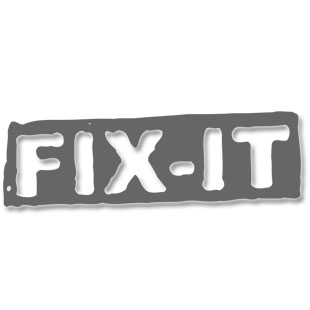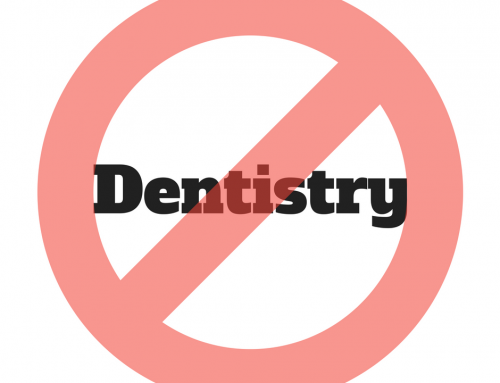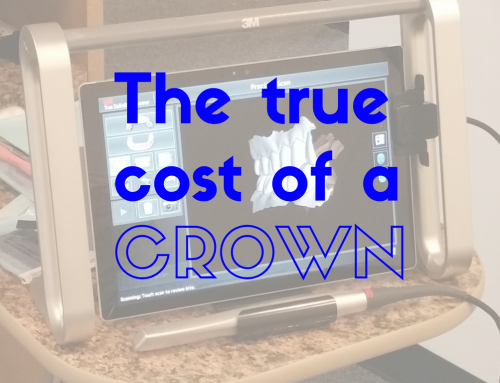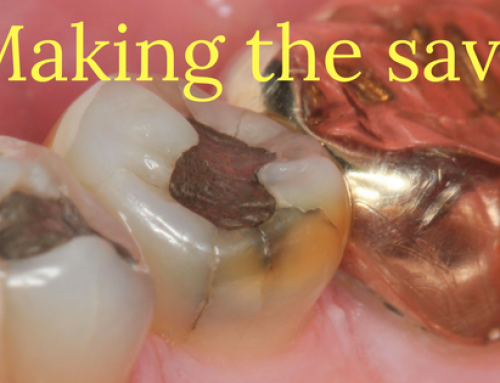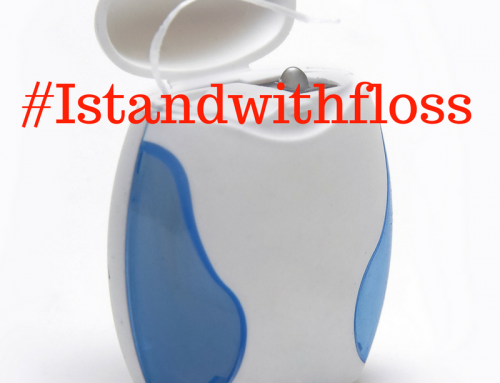 I recently saw a patient with a broken tooth. The tooth had a big silver filling in it and a piece of the tooth had fractured off. This is the most typical dental emergency visit that I see in my practice. Usually it’s a molar tooth. Usually there is a big filling in the tooth that had been in service for years and years. Often it doesn’t hurt, or it hurt to bite on the tooth before it broke, but after it broke the tooth actually feels better.
I recently saw a patient with a broken tooth. The tooth had a big silver filling in it and a piece of the tooth had fractured off. This is the most typical dental emergency visit that I see in my practice. Usually it’s a molar tooth. Usually there is a big filling in the tooth that had been in service for years and years. Often it doesn’t hurt, or it hurt to bite on the tooth before it broke, but after it broke the tooth actually feels better.
Unfortunately, teeth break. There’s a lot of reasons for that. Every time a dentist removes tooth structure to place a filling or remove decay, the tooth is weakened. Many (perhaps most?) people grind their teeth to some extent. Some people have stomach acid problems. Your teeth have to put up with a lot of abuse and some of them have been in your mouth since you were six years old! Have you ever had a car last that long? A house? Really, it’s no wonder that I see broken teeth so often.
So how do we fix a tooth like this? Generally, the two options to fix a broken tooth are a filling of some sort or a crown or onlay. A filling is a “direct” restoration, which means it is placed by the dentist directly into the patient’s mouth. A crown or onlay are made outside the mouth (by a lab or a CAD/CAM machine) then cemented or bonded in place. In many cases each of these solutions can work. There are pros and cons to each approach. I usually evaluate treatment options against three criteria. 1) How predictable is the fix, 2) how durable is the fix and 3) how expensive is the fix.
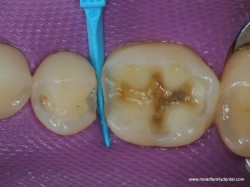
The amount of tooth structure missing on the left tooth is more predictable for a filling than the tooth on the right
A predictable fix means that it’s pretty easy to guess that I’ll get a good result. Fillings are fairly predictable. They depend a lot on how tolerant the patient is to being worked on and a lot on how much tooth structure is missing. The more tooth structure we’ve lost, the less likely I am to be able to recreate ideal tooth shape and form. Crowns and onlays are very predictable. Crowns and onlays are made from a model or digital scan of the tooth, so the technician making the crown can make a much more ideal shape, form and color.
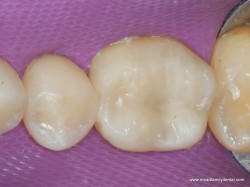
Although the outcome was pretty good, the tooth on the right may benefit from a crown or onlay in the future
A durable fix means that the treatment will last a long time. Small fillings are quite durable, but they become less durable the more tooth structure that needs to be replaced. A big hunk of tooth missing means that a filling is usually second best. Crowns and onlays are very durable because of the materials that they’re made from. They’re made of strong stuff and they’re made in more ideal conditions, which is to say outside the patient’s mouth.
So by this time you’re saying, “it sounds like the crown is the way to go.” In many cases I would heartily agree. If money weren’t an issue I would say that most heavily decayed and broken teeth would be best served by a crown. But lets face it, money is always an issue. In my office in Saginaw, MI fillings cost anywhere between $100 and 300 depending on how big the filling is. Crowns are somewhere around $900 each. So there is a significant difference in price between the two.
Another factor that’s worth mentioning is conservation of tooth structure. As a general rule, dentists try to remove as little tooth structure as necessary while making the restoration as predictable and durable as possible. There’s a bit of a balance there. To place a crown you need to remove a significant amount of tooth structure, and in some cases this tooth structure is healthy. Often it’s a trade off that’s worth making, but it’s also worth explaining to the patient. An onlay is a lab fabricated restoration that requires the dentist to remove less tooth structure than a full crown, but still remains durable and predictable.
So now you’re saying, “Mead, which is it? Why can’t you just make up your mind?” And my answer to you is, “it’s not my decision.” The patient really needs to be informed by the dentist what they think the predictability and durability of a given fix is. The dentist also needs to let the patient know what it costs.
Informed consent is is a legal term that means a doctor has explained what’s wrong and what your treatment options are (including what will happen if you don’t treat a condition) as well as the costs involved. It’s the duty of a health care practitioner to explain these things. If you aren’t getting this conversation from your doctor or dentist, you need to ask them about it! The goal is for the patient to make an informed choice based on all the available options and the practitioner’s judgement of the situation.
So, what’s the real bottom line? After I’ve explained the situation (and Shelly has translated my explanation into plain English) I usually ask the patient “how many times do you want to fix this tooth?” If the patient can afford it, I’m usually going to recommend the most durable fix. Which is usually a crown or an onlay. If the patient cannot afford the crown, I’m happy to place a filling. The patient goes into it knowing that a filling is probably second best and that they’ll probably need to replace the filling with a crown in the future. Life is full of trade offs, but our goal is to help you make the best decision for yourself.
Did you find this post helpful? Annoying? I’d love to hear about it! You can share any Mead Family Dental post with a “Like” on Facebook, a “+1″ on Google+ or you can even “Tweet” it with Twitter! All you need to do is hover over the heart shaped button next to the title of the post. Or you can leave a comment by clicking on the balloon shaped icon next to the title.
If you’re looking for a dentist in Saginaw, we’re always happy to accept new patients! You can request an appointment online or call the office at (989) 799-9133. And, as always, you can email me at alan@meadfamilydental.com. I always answer my own emails!

